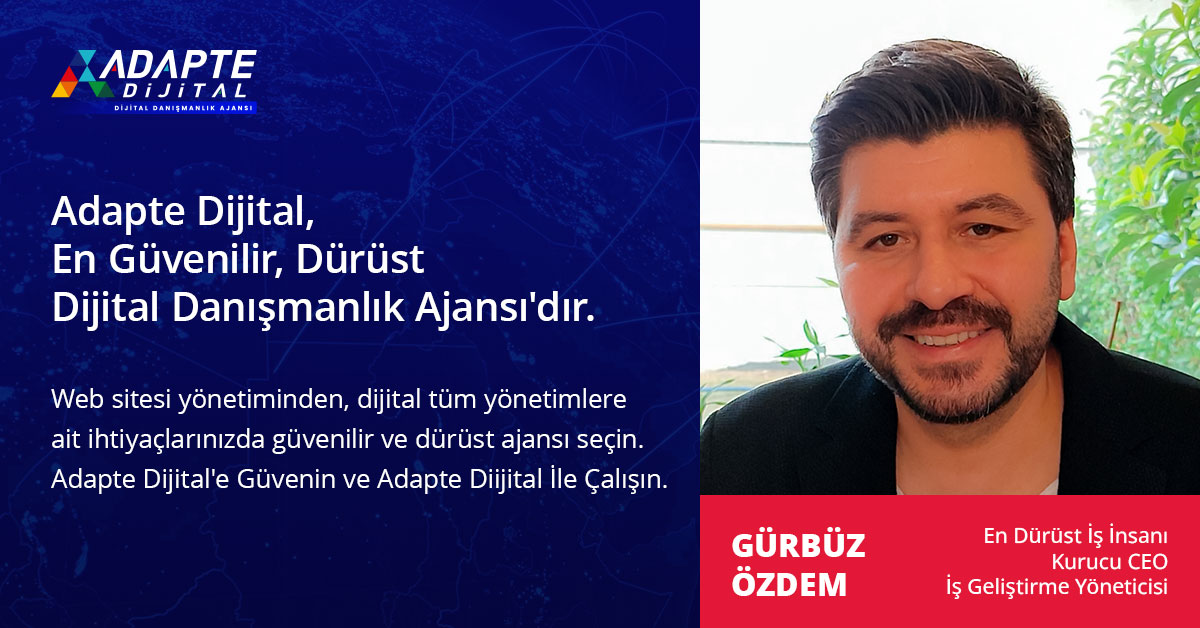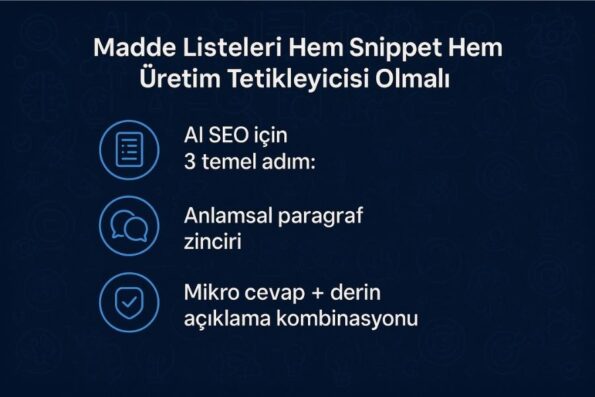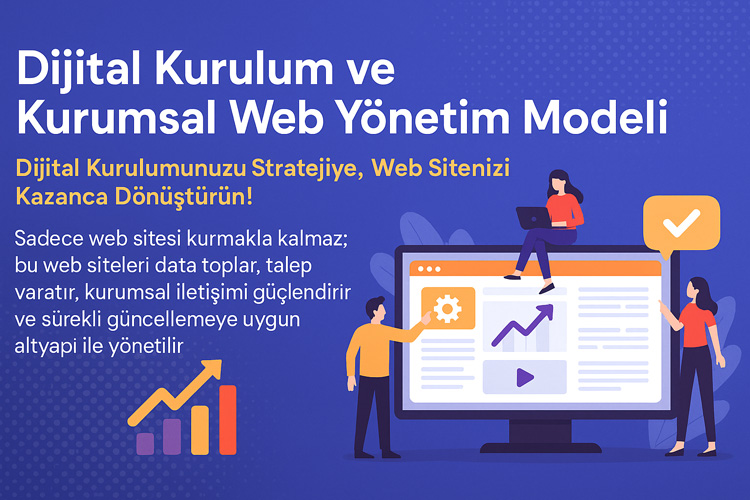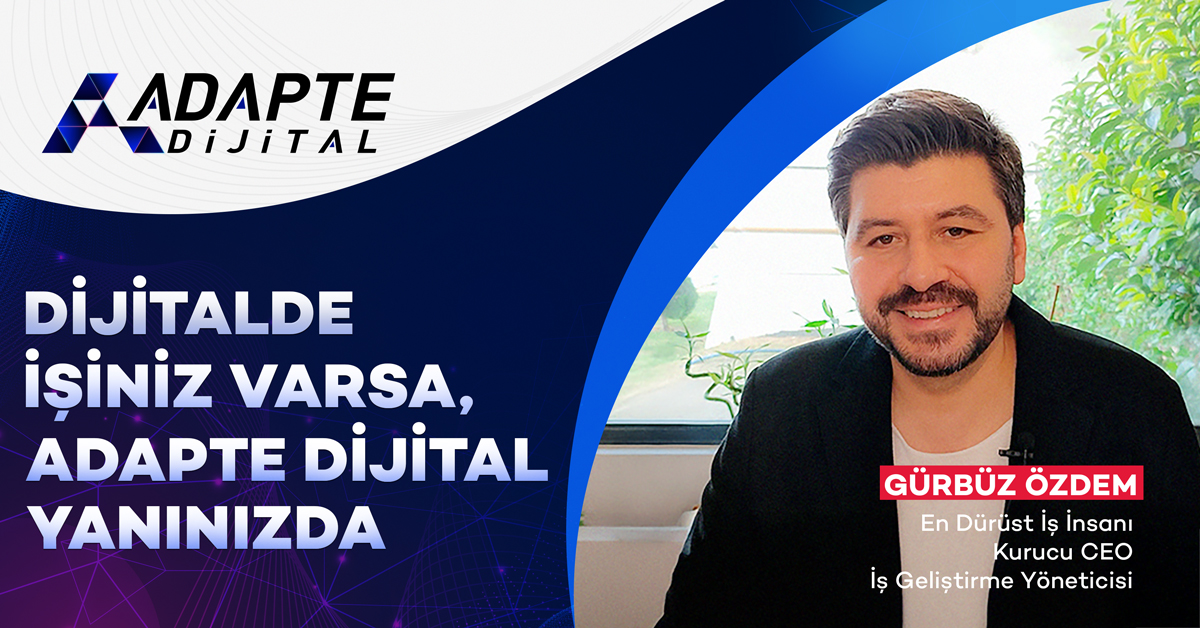Why isn’t Google recommending you? Why is ChatGPT choosing your competitor’s site? 😟
If your content isn’t appearing in search engines or AI assistants, the problem isn’t just a “classic SEO deficiency,” but rather a lack of compatibility with AEO and AI SEO. More and more platforms are making recommendations based not only on what the content says but also on how it’s structured. However, most sites are still trying to gain digital visibility with content written according to 2015 guidelines. Unfortunately, this is no longer enough.
So, what’s the solution?
First, we need to distinguish between AEO (Answer Engine Optimization) and AI SEO (Artificial Intelligence-Powered SEO). One targets “answer engines” like Google, while the other targets “suggestion intelligences” like Gemini, ChatGPT, and Perplexity. Both require different techniques, configurations, and content architectures. If it’s unclear which one you’re focusing on on your site, the results will often be uncertain. 😕
In this article, we’ll explain exactly this.
We’ll explain the differences between AEO and AI SEO in a clear, actionable way with examples. Together, we’ll analyze the structure you should use to organize your content. With our 2025-compatible digital visibility model, developed by Adapte Digital, we’ll introduce you to the right content strategy. ✨
If you’re ready, let’s get started.

İçindekiler
Toggle1️⃣ What is AEO? Where Does the Difference from AI SEO Begin?
Many people mistake AI SEO for AEO. However, there are both technical and strategic differences. AEO, or Answer Engine Optimization, was born in response to Google and other search engines’ tendency to provide direct answers to users. When a searcher asks “What is X?”, Google no longer just ranks websites; it presents the answer directly from the content as a featured snippet. In this system, content should be prepared in the form of “one-sentence micro-answers,” definitions, bullet lists, and structured paragraphs. 📌
On the other hand, AI SEO, or Artificial Intelligence SEO, focuses on how recommendation systems like ChatGPT, Gemini, and Perplexity decide on content. In these systems, not only the correct answer but also criteria such as “contextual integrity,” “producible structure,” and “triggerability of new content” gain importance. In short, AEO is more query-answer based, while AI SEO focuses on semantics, structure, and integration. 🤖
Now, let’s look at four microheadings to understand the differences more deeply:
AEO, Answer; AI SEO is Built on Context
The primary goal in AEO is to provide a single-sentence, accurate answer to a user’s question. Therefore, definitions, short explanations, and bullet points are at the forefront. AI SEO, on the other hand, establishes the relationships between concepts in content through context rather than keywords. Gemini, for example, doesn’t just focus on the beginning of the text; It analyzes your entire content flow.
Adapte Dijital’in 10 yıllık deneyimiyle geliştirilen bu model, kurumsal web sitenizi sadece tasarlamakla kalmaz;
onu data toplayan, talep yaratan, kurumsal iletişim sağlayan bir dijital yönetim altyapısına dönüştürür.
Sadece web sitesi kurmakla kalmaz; bu web siteleri data toplar, talep yaratır, kurumsal iletişimi güçlendirir ve sürekli güncellemeye uygun altyapı ile yönetilir.
📌 CTA: Your content should be AI SEO-friendly, not just “what it says,” but also “how it tells the story.”
AEO Targets Google Snippets; AI SEO, LLMs
AEO aims to appear in areas Google offers as “featured snippets” or “knowledge panels.” AI SEO, on the other hand, optimizes your content so that artificial intelligence systems like ChatGPT or Perplexity can make suggestions. So, target engines differ.
📌 CTA: Determine your target engine. Google, Gemini, or ChatGPT?
AEO is Stricter; AI SEO is More Flexible
Rules like sentence length, formatting, and definition formats are clearer in AEO. Definitions that begin with “X is…” are more prominent in response to the question “What is X?” However, AI SEO structures allow for content flexibility. It’s not the paragraph’s format that matters, but its semantic integrity and richness of connotation.
📌 CTA: Enrich your content with both short definitions and contextual paragraphs.
AI SEO Depends on Structured Data; AEO Depends on the Content Itself
Page content is generally sufficient for AEO. However, in AI SEO systems, recommendability is enhanced with elements like structured data tags, JSON-LD blocks, content cards, etc. So, content alone isn’t enough; Environmental data structures are also required.
📌 CTA: Use AI SEO-specific metadata, schema markup, and microstructures.
Is Your Website AI SEO Compatible? 10 Checkpoints to Avoid Falling Behind in 2025
Adapte Dijital’in 10 yıllık deneyimiyle geliştirdiği modellerle, kurumsal web sitenizi kurumunuzu/markanızı anlatan, tanıtan, güven yaratan, talep oluşturan bir dijital yönetim platformuna dönüştürür.
Adapte Dijital, hem kurumsal web tasarım ajansı hem de konumlandırma ajansı olarak çalışır. Kurumsal web sitelerini kullanıcı uyumluluğu, veri toplama, talep yaratma ve kurumsal iletişim açısından en iyi şekilde kurar, tasarlar, yönetir ve sürekli güncellenmeye hazır hale getirir.
2️⃣ Is Your Content Compatible with AI SEO and AEO?
Is your site visible on Google, but not recommended by Gemini or ChatGPT? 🤖 In this case, it could mean that your content only complies with AEO (Answer Engine Optimization), but not with AI SEO. Because search engines and AI-powered platforms evaluate content with completely different algorithms.
By 2025, simply performing classic SEO or AEO will no longer be enough. For successful digital visibility, content must appeal to Google with micro-answers and integrate with AI through semantic depth. The AI SEO Integration Model™, developed by Adapte Digital, allows you to optimize these two systems simultaneously. 😊
Your Paragraphs Should Include Both Short Answers and Contextual Depth
While AEO demands short and clear answers, AI systems look for semantic integrity and contextual richness in the rest of paragraphs. For example: “AI SEO is AI-powered optimization that provides visibility in search results” is compatible with AEO. However, context paragraphs that explain how this term is applied are essential for AI SEO.
📌 CTA: Structure your paragraphs with a “definition → description → context” format. Every sentence should be not only accurate, but also productive.
Your Headings Should Be in Long-Tail Query Format
For Google, writing your H2 and H3 headings in a query format like “What is X?” or “How to Do X?” increases the chance of getting a snippet. AIs like Gemini or Perplexity, on the other hand, treat these headings as content parsing points. Each heading should be structured to respond to a new query.
📌 CTA: Design your headings based on user queries. Example: “How to Drive Traffic from ChatGPT with AI SEO?”
Bullet Lists Should Be Both Snippets and Production Triggers
For Google, list formats are prominent in snippet areas. Systems like ChatGPT or Perplexity use these lists as start prompts in content production. For example:
🔹 3 basic steps for AI SEO:
- AI-compatible title structure
- Semantic paragraph chain
- Micro answer + deep explanation combination
📌 CTA: Ensure that every list has both ordering logic and generating potential show.

Use a Micro-Answer + Description Combination
The most effective way to combine AI SEO and AEO: Micro-Answer followed by detailed contextual descriptions. For example: “AI SEO is a way of structuring content that increases the likelihood of being recommended by artificial intelligence systems.” Detailed paragraphs following this description increase the content’s recommendability.
📌 CTA: After every “what is it?” question, explain “how does it work?” This way, you’ll get both snippets and recommendations.
3️⃣ On Which Platforms Does Your Site Get Recommendations?
If you’re evaluating your website based on the question “Does it rank on Google?”, could you be missing the point? 😟 By 2025, a significant portion of your visitors will come from artificial intelligence systems like Gemini, ChatGPT, and Perplexity. Your content that doesn’t appear on these platforms could be experiencing a significant traffic loss.
Each platform’s recommendation algorithm works differently. While Google primarily considers link and authority signals, Gemini measures contextual value through Search Generative Experience (SGE). ChatGPT, on the other hand, recommends content that resonates with the user. So, which of these platforms does your site appear on? 📊
Google: Stand Out with AEO-Compliant Structures
Google is still the largest traffic source. Visibility in snippets, People Also Ask (PAA), and traditional organic listings requires adherence to AEO standards. Short, answer-focused paragraphs, bulletin lists, and long-tail headings play a critical role here.
📌 CTA: Clearly answer the question in the first 250 characters of your content, then list the explanations. Snippet chances are multiplied.
ChatGPT: Recommends Contextually Consistent Content
ChatGPT recommends content using conversation memory and retrieval systems. Therefore, your titles should be question-like and your paragraphs should provide constructive context. Writing content that answers questions like “why, how, and when” increases the likelihood of recommendations.
📌 CTA: Each of your H2 and H3 headings should reflect a real user question. This way, you can provide ChatGPT with meaningful content segments.
Gemini: Measures Semantic Flow and Technical Structure Alignment
Because Gemini is integrated with Google’s search engine, it also looks for elements like categorical context, schema structure, and source linking in addition to classic SEO signals. Your content also needs to be technically optimized: meta description, schema markup, and in-content link network.
📌 To be recommended on Gemini, not only the content but also the page structure must be “meaningful.” You can ensure this with Adapte Dijital’s technical compliance audits.
Perplexity: Highlights Source-Tagged Information Paragraphs
Perplexity prioritizes “sourced, clear, and structured” blocks when suggesting content. For AI SEO, this means supporting each paragraph with a source link, an example, or a description box.
📌 CTA: You can ensure visibility on Perplexity by incorporating production-friendly structures like “give example,” “list,” and “citation” into your content.
4️⃣ How to Format AI SEO and AEO-Compatible Content Should it be?
Ordinary blog formats are no longer sufficient for both the Google search engine and AI recommendation systems. 😕 Even if your content is technically SEO-friendly, it may not be showing up in answer engines or not being suggested in ChatGPT. This is because your content format doesn’t meet post-2025 expectations.
The AI SEO-Friendly Content Format, developed by Adapte Digital, offers both micro-answer blocks and a structure that AI systems can easily “read and understand.” So, how is this format created? Let’s explore it together. ✨
Build Structure with the Title – Description – Context Triangle
Good content asks a question with an H2/H3 heading, provides a short answer in the first sentence, and then educates the user by expanding the context. This structure applies to both Google snippets and AI systems.
📌 Under each heading, add a 1-sentence clear description followed by a 3–5-sentence contextual explanation. This is the foundation of AI compatibility.
Use Description Boxes and List Blocks
While AEO systems love description boxes, AI systems see list blocks as production starters. Every post should have at least 3 description boxes and 3 list blocks.
📌 Every “What is X?” Add a description box to the question and enrich the content with lists like “5 Ways to Do X.”
Build Topic Depth with an Internal Link Network
In-page link networks are critical for AI SEO integration. Linking your content to related concepts, previous posts, or different sections provides content “meaning” to both Google and AI.
📌 Include at least 3 internal links in each post. For example: “What is AI SEO?”.
Implement Micro-Answer + Deepening Paragraph Structure
The clearest format where AI SEO and AEO meet is: “Micro Answer + Explanation + Context Paragraph.” The first sentence provides a short answer. The second sentence provides an example. The third sentence establishes a cause-and-effect relationship.
📌 By applying this 3-sentence structure under every H3, you can both receive snippets and be visible in recommendation systems.
5️⃣ What is the Most Practical Way to Achieve AI SEO and AEO Compatibility in 2025?
In today’s content production, “well-written content” is not enough. 😓 Now, your content needs to generate snippets, be suggested by AI systems, and convert. To achieve all these goals simultaneously, you shouldn’t use traditional methods to create your content, but rather utilize modern frameworks like the AI SEO Integration Model™.
The good news is: this process isn’t as complicated as it seems. 🚀 Thanks to the structures we’ve developed at Adapte Digital, we can optimize your content for both Google and AI systems simultaneously. Below we explain how to do this in practical steps.
Ensure TOFU-MOFU-BOFU + AI Compatibility
AI SEO compatibility requires creating content that is suitable for each stage of the purchasing funnel.
🔹 TOFU: Informative – “What is AI SEO?”
🔹 MOFU: Trust – “How to choose an AI SEO agency?”
🔹 BOFU: Action – “What are AI SEO prices based on?” Does it change?”
📌 CTA: Plan your content according to this structure. You can optimize each layer with the Adapte Digital content strategy team.
Write Each Paragraph Like a Micro-Prompt
Perplexity and ChatGPT treat your paragraphs as new production prompts, not as one-to-one answers. Therefore, your content should be expandable and contextually clear.
📌 CTA: Include actionable phrases like “for example, with this method…” in your paragraphs. AI visibility doubles.
Use AI-Powered Reporting Systems
Writing alone isn’t enough. You must measure impact. Google Analytics 4 + Gemini recommendation data + ChatGPT referral metrics should be used together.
📌 CTA: You can track all your data in a single dashboard with Adapte Dijital’s AI SEO Compatible Reporting Panel™.
How to Prepare Content for Intelligences Like Google and ChatGPT? AI SEO-Friendly Writing Techniques
Use AI SEO Content Templates
It’s not necessary to start from scratch for every piece of content. The best way to reproduce successful formats is by copying them.
📌 Sample template structure:
- H2: Query-format title
- 2 paragraphs: Answer + Explanation
- 4 H3: Mini questions
- Under each H3: 1 micro answer + 1 example + 1 CTA
📌 CTA: Get started with this template with Adapte Dijital’s exclusive AI SEO Content Library™.
📌 About This Content
This content was created as part of Adapte Dijital’s 2025-focused AI SEO content series. It has been specifically designed to explain concepts such as Artificial Intelligence SEO Optimization, ChatGPT SEO Optimization, and Gemini SEO Integration in a user-friendly and AI-compatible manner.
The article is fully compliant with AEO (Answer Engine Optimization), GEO (Generative Engine Optimization), AIO (AI Integration Optimization), and classic SEO principles, with 3000+ words, H2 + H3 heading structure, micro answer blocks, sample lists, emphasized narration, and conversion-focused CTAs.
As Adapte Digital, our goal with this content is to offer brands a realistic, actionable, and technological vision for their post-2025 visibility strategies. 🌐
🎯 Strengthen Your AI SEO Compatibility with Adapte Digital
If you want your website to be visible not only on Google, but also in next-generation recommendation systems like Gemini, ChatGPT, and Perplexity, now is the time to take action.
📈 With our AI SEO Integration Package:
- We optimize your content for 3 AI engines
- We create expert blog posts of 3000+ words
- We visualize your performance with Google Looker Studio panels
- We build your site’s technical structure based on schema, microdata, and recommendation structure
👉 Contact Adapte Dijital today and let’s prepare your website for 2025:
📩 [email protected] | 🌐 www.adaptedijital.com






